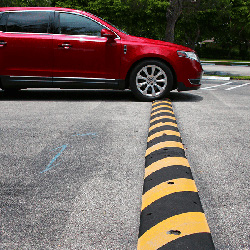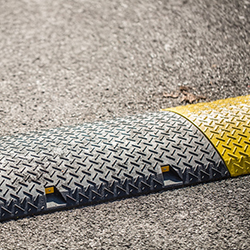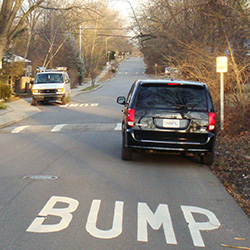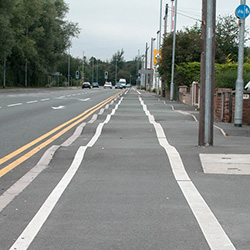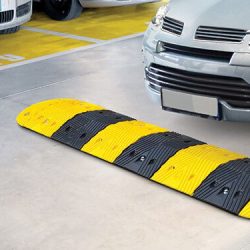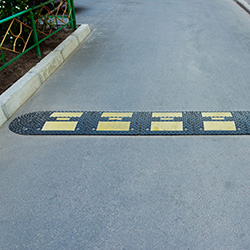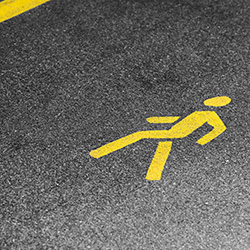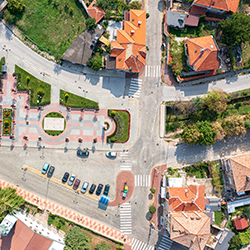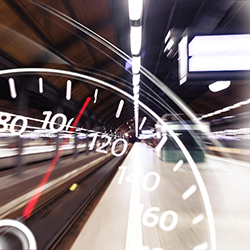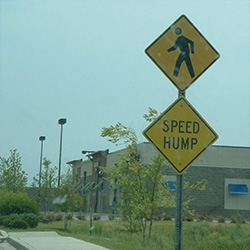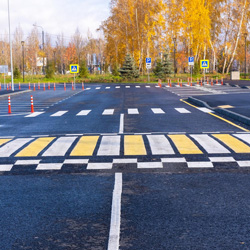Are speed bumps effective?
Speed bumps are a familiar sight on many roads and parking lots, serving as a common traffic calming measure. These physical obstacles are strategically placed to slow down vehicles and enhance safety for pedestrians and drivers alike. However, the question remains -...
Heavy duty speed bumps
Heavy duty speed bumps play a crucial role in enhancing road safety by effectively reducing vehicle speeds in specific areas. These traffic calming devices are designed to slow down vehicles to ensure pedestrian safety, prevent accidents, and maintain order on the...
The world of speed bumps
Welcome to the world of speed bumps – those familiar road obstacles that make drivers slow down and ensure safety on the streets. Speed bumps are a common sight on both roads and parking lots, strategically placed to regulate vehicle speed and enhance pedestrian...
Guide on enhancing safety and traffic control with speed bumps
Welcome to a comprehensive guide on enhancing safety and traffic control with speed bumps for asphalt. Speed bumps are a crucial tool in managing vehicle speeds and ensuring road safety. In this article, we will delve into the benefits of utilizing speed bumps,...
Types of Speed Bumps and Humps
Speed bumps and humps are common traffic calming measures used on roads to regulate vehicle speed and enhance safety for pedestrians and drivers alike. These physical features are strategically placed to slow down vehicles and reduce the risk of accidents in areas...
Types of speed bumps
Types of Speed Bumps and Humps: A Complete Guide to Road Safety Solutions When it comes to road safety, speed bumps and speed humps are essential traffic calming solutions. They help reduce vehicle speed, prevent accidents, and improve pedestrian safety. But...
Effective Speed Bump Solutions for Enhanced Pedestrian Safety and Accident Prevention
Pedestrian safety is a top concern in any parking lot, and the use of speed bumps has proven to be an effective solution in preventing accidents and fatalities. However, the size of your parking lot and the number of pedestrians, vehicles, grassy areas, and walkways...
Exploring the Effectiveness of Speed Humps in Reducing Vehicular Speed on Residential Streets
Speeding on residential streets is a major concern for communities all over the world. With limited traffic control measures available for single-lane streets, many cities and neighborhoods have turned to speed humps as a solution. In this article, we will delve into...
Enhancing Road Safety: Exploring the Effectiveness of Speed Bumps and Other Traffic Control Devices
Road safety is a top priority for communities and cities around the world. Traffic control devices play a crucial role in ensuring the safety of drivers, pedestrians, and other road users. In this article, we will explore the effectiveness of speed bumps and other...
Driving Safety Forward: Your Questions Answered on Traffic Calming Measures
Welcome to our comprehensive FAQ, where we delve into the impactful world of traffic calming measures. From the basic principles of reducing vehicle speeds to the effectiveness of initiatives like Vision Zero, this article addresses your most pressing questions....
Enhancing Safety and Controlling Traffic Speed with Premium Speed Bumps and Road Humps
Traffic safety is a crucial aspect of any community, and finding effective solutions to manage traffic speed is essential. Excessive speed in parking lots and driveways can lead to serious accidents and injuries for both pedestrians and drivers. This is where Unimat...
The Role of Speed Bumps in Enhancing Community Safety
In today’s fast-paced world, controlling the speed of vehicles in sensitive areas such as school zones, hospital vicinities, and parking lots has become a critical concern. The safety of pedestrians and drivers is paramount, and one effective solution that has been...

